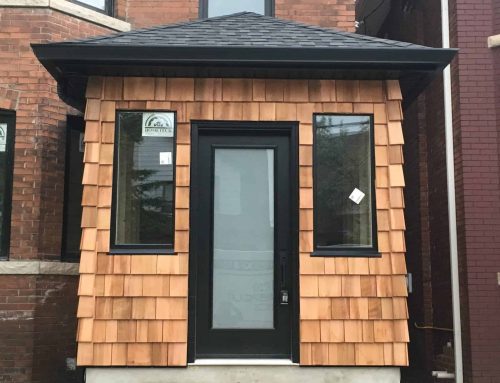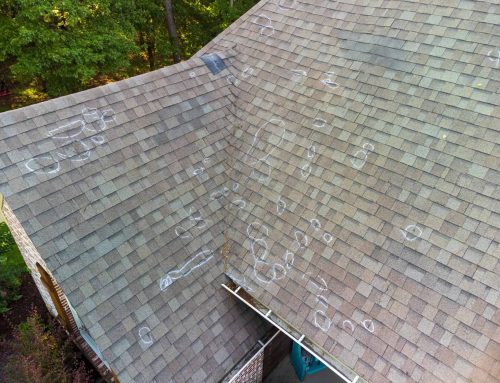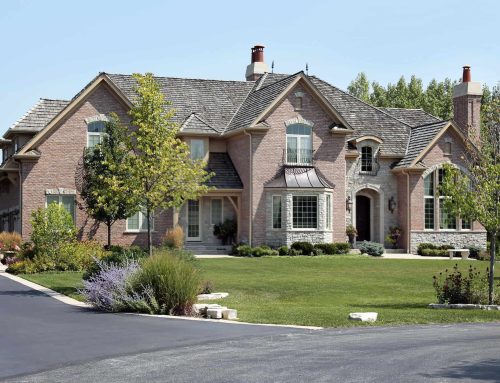Ice dams create a dangerous cascade of problems that extend far beyond visible roof damage, potentially compromising your home’s ventilation system and creating ideal conditions for toxic mold growth. What begins as a seemingly minor ice buildup at your roof’s edge can quickly evolve into a serious health hazard and structural threat that affects your entire home’s indoor air quality and safety.
Toronto’s winter climate creates perfect conditions for ice dam formation through its combination of heavy snowfall, fluctuating temperatures, and extended cold periods. The city averages 115-130cm of annual snowfall with frequent freeze-thaw cycles that can occur multiple times throughout winter. When these conditions combine with common attic insulation and ventilation deficiencies found in many GTA homes, ice dams become not just a roofing problem but a whole-home health and safety concern that requires immediate attention and professional intervention.
Understanding Ice Dam Formation and Toronto’s Contributing Factors
Ice dams develop through a specific process that Toronto’s climate conditions make particularly problematic. Understanding this formation process helps homeowners recognize the early warning signs and take preventive action before serious damage occurs.
The Science Behind Ice Dam Development
Ice dams form when heat escapes from your home’s interior into the attic space, warming the roof surface and melting snow from underneath. This melted snow flows down the roof until it reaches the colder eaves area, where it refreezes and creates an ice barrier. As this process continues, the ice barrier grows larger and begins trapping subsequent snowmelt behind it.
The trapped water has nowhere to go except under the shingles, where it can penetrate into the roof structure, attic space, and eventually into your home’s interior. This water infiltration creates the moisture conditions that lead to ventilation problems and mold growth in attic spaces.
Toronto’s Climate as an Ice Dam Catalyst
Toronto’s position near Lake Ontario creates microclimate effects that can intensify ice dam formation. Lake-effect snow can deposit heavy accumulations on roofs, while urban heat island effects from the city’s concrete and asphalt create uneven heating patterns that contribute to irregular snow melting.
The city’s frequent temperature fluctuations during winter months create ideal ice dam conditions. Daytime temperatures that rise above freezing followed by nighttime refreezing create the cycle of melting and freezing that builds ice dams progressively throughout the winter season.
Toronto’s building stock includes many older homes built before current insulation and ventilation standards were established. These homes are particularly vulnerable to ice dam formation due to inadequate attic insulation and poor ventilation design that allows excessive heat loss through the roof surface.
Early Warning Signs of Ice Dam Formation
Homeowners can identify potential ice dam development before serious damage occurs by watching for specific warning signs. Icicles forming along the roof edge, while picturesque, often indicate the beginning stages of ice dam formation and should be taken seriously.
Uneven snow melting patterns on the roof, where some areas are clear while others retain snow cover, suggest heat loss problems that contribute to ice dam formation. These patterns often reveal insulation deficiencies or air leaks that need professional attention.
Water staining on exterior walls just below the roofline can indicate that ice dam water infiltration has already begun, requiring immediate assessment and intervention to prevent further damage.
The Hidden Connection Between Ice Dams and Attic Ventilation
Ice dams and attic ventilation problems create a destructive cycle where each issue makes the other worse, leading to progressively more serious problems throughout the winter season and beyond.
How Ice Dams Compromise Ventilation Systems
Ice dam formation often blocks soffit vents, which are critical intake points for attic ventilation systems. When these vents become blocked by ice, the natural airflow that keeps attics cool and dry is disrupted, creating conditions that worsen ice dam formation while promoting moisture accumulation.
Ridge vents and other exhaust vents can also become compromised when ice dams create water backup that penetrates the roof structure. This water infiltration can damage ventilation components and create additional moisture sources within the attic space.
The ice dam formation process itself indicates that the attic ventilation system is not functioning properly. Properly ventilated attics maintain temperatures close to outdoor temperatures, preventing the uneven heating that causes ice dam formation in the first place.
Ventilation Failure Consequences
When attic ventilation fails due to ice dam interference, several serious problems develop rapidly. Moisture accumulation increases dramatically as warm, humid air from the home’s interior becomes trapped in the attic space without adequate exhaust ventilation to remove it.
Temperature regulation becomes impossible when ventilation systems are compromised, leading to continued ice dam growth and increased energy costs as heating systems work harder to maintain comfortable interior temperatures despite increased heat loss through the roof.
The lack of proper air circulation allows moisture levels to rise to dangerous levels that promote mold growth, wood rot, and insulation damage. These conditions can persist even after ice dams melt, creating long-term problems that extend well beyond the winter season.
The Insulation Factor
Ice dams often damage attic insulation through water infiltration, reducing its effectiveness and creating additional heat loss that worsens ice dam formation. Wet insulation loses much of its thermal resistance and can become a breeding ground for mold and bacteria.
Compressed or displaced insulation around ventilation blockages creates thermal bridges that allow additional heat loss, contributing to uneven roof heating that promotes continued ice dam formation throughout the winter season.
Mold Growth Risks and Health Implications
The moisture conditions created by ice dams and compromised ventilation systems create ideal environments for mold growth that can seriously impact your family’s health and your home’s structural integrity.
Optimal Conditions for Mold Development
Mold requires three basic conditions to thrive: moisture, organic material, and temperatures between 40-100°F. Ice dam situations provide all three conditions in abundance, making attic spaces particularly vulnerable to rapid mold colonization.
The wood framing, insulation materials, and other organic components in attic spaces provide ample food sources for mold growth. When these materials become wet from ice dam infiltration and remain damp due to poor ventilation, mold can establish itself quickly and spread extensively.
Toronto’s winter heating season maintains attic temperatures within the ideal range for mold growth, meaning that once moisture problems begin, mold development can continue throughout the winter and into spring when conditions become even more favorable.
Health Risks from Attic Mold
Mold growth in attic spaces poses serious health risks even when it’s not visible from living areas. Mold spores can circulate throughout the home’s air system, affecting indoor air quality and triggering respiratory problems, allergic reactions, and other health issues.
Individuals with asthma, allergies, or compromised immune systems are particularly vulnerable to mold exposure. Children and elderly family members may experience more severe reactions to mold contamination that originates in attic spaces.
Long-term exposure to mold can lead to chronic health problems including persistent respiratory issues, headaches, fatigue, and cognitive difficulties. The hidden nature of attic mold often means exposure continues for extended periods before the source is identified and addressed.
Structural and Property Value Impacts
Mold growth in attic spaces can cause significant structural damage by breaking down wood framing materials and compromising the integrity of roof structures. This damage often goes unnoticed until it becomes severe enough to affect the home’s structural stability.
The presence of mold contamination can dramatically impact property values and make homes difficult to sell. Real estate transactions often require mold disclosure, and potential buyers may demand extensive remediation before proceeding with purchases.
Professional mold remediation in attic spaces can cost thousands of dollars and may require extensive reconstruction work if structural damage has occurred. Early prevention through proper ice dam management is far more cost-effective than dealing with established mold problems.
Prevention Strategies for Toronto Homeowners
Preventing ice dams and their associated problems requires a comprehensive approach that addresses both immediate risks and long-term structural improvements tailored to Toronto’s specific climate challenges.
Immediate Prevention Measures
Proper attic insulation is the foundation of ice dam prevention, as it prevents heat loss that causes uneven roof heating. Toronto’s climate requires insulation levels of R-50 or higher in attic spaces to meet current building codes and provide effective ice dam prevention.
Air sealing between living spaces and attic areas prevents warm air from entering attic spaces where it can cause roof heating. Common air leak sources include recessed lighting, bathroom fans, and areas where pipes or wiring penetrate the ceiling.
Adequate ventilation design ensures that any heat that does enter the attic space is quickly removed before it can cause roof heating. This typically requires a combination of soffit intake vents and ridge or roof exhaust vents that create continuous airflow.
Professional Assessment and Upgrades
Energy audits can identify specific heat loss sources that contribute to ice dam formation, providing targeted recommendations for improvements that address your home’s particular vulnerabilities. These assessments often reveal problems that aren’t apparent through visual inspection alone.
Ventilation system evaluation by qualified professionals ensures that your attic ventilation meets current standards and functions effectively throughout Toronto’s winter conditions. Many older homes have inadequate or poorly designed ventilation systems that require upgrading.
Insulation upgrades should be performed by experienced contractors who understand Toronto’s climate requirements and can ensure proper installation that provides effective thermal protection without compromising ventilation function.
Seasonal Maintenance and Monitoring
Regular roof maintenance before winter includes removing debris from eavestroughs and ensuring that all drainage systems function properly. Proper drainage prevents water accumulation that can contribute to ice dam formation.
Snow removal from roofs may be necessary during heavy accumulation periods, but this should only be performed by experienced professionals with proper safety equipment and techniques. Improper snow removal can damage roofing materials and create additional problems.
Monitoring for early ice dam formation allows for prompt intervention before serious damage occurs. Professional ice dam removal services can safely remove ice accumulations before they cause water infiltration and associated problems.
Professional Ice Dam Removal and Remediation Services
When ice dams do form despite prevention efforts, prompt professional removal is essential to prevent serious damage to your home’s structure, ventilation system, and indoor air quality.
Safe Ice Dam Removal Techniques
Professional ice dam removal requires specialized equipment and techniques that safely remove ice without damaging roofing materials. Steam removal methods are typically most effective and safest for both the roof and the technicians performing the work.
Chemical ice melting products should never be used for ice dam removal, as they can damage roofing materials and create environmental concerns. Professional services use appropriate techniques that remove ice dams without causing additional problems.
Safety considerations make professional removal essential, as working on icy roofs presents serious injury risks. Professional contractors have the training, equipment, and insurance necessary to perform ice dam removal safely and effectively.
Damage Assessment and Repair
After ice dam removal, professional assessment can identify any damage that has occurred to roofing materials, ventilation systems, or attic spaces. Early identification of damage allows for prompt repairs that prevent further problems.
Water damage remediation may be necessary if ice dam infiltration has caused moisture problems in attic spaces or living areas. Professional remediation ensures that all affected materials are properly dried and treated to prevent mold growth.
Ventilation system restoration often requires professional attention after ice dam events, as ice and water infiltration can damage vents and compromise system function. Proper restoration ensures that ventilation systems continue to function effectively.
Long-term Solutions and Prevention
Comprehensive prevention planning addresses the underlying causes of ice dam formation through targeted improvements to insulation, ventilation, and air sealing. Professional contractors can develop customized prevention strategies based on your home’s specific vulnerabilities.
System integration ensures that all improvements work together effectively rather than creating conflicts that could lead to other problems. Professional design considers how insulation, ventilation, and air sealing work together to provide comprehensive ice dam prevention.
Regular maintenance programs can help prevent future ice dam problems through scheduled inspections and preventive maintenance that addresses issues before they become serious problems.
Protecting Your Home with Expert Ice Dam Solutions
Ice dams represent a serious threat to your home’s structural integrity, indoor air quality, and your family’s health through their impact on attic ventilation and potential for mold growth. Understanding these connections helps Toronto homeowners recognize the urgency of addressing ice dam problems promptly and comprehensively.
The key to effective ice dam management lies in both prevention through proper insulation and ventilation design, and prompt professional intervention when ice dams do form. Toronto’s climate makes ice dam formation a persistent risk that requires ongoing attention throughout the winter season.
Experiencing ice dam problems or concerned about your home’s vulnerability? Contact ODS today for professional assessment and removal services that protect your home from ice dam damage and its serious consequences. Let us help you maintain a safe, healthy home environment throughout Toronto’s challenging winter conditions.









